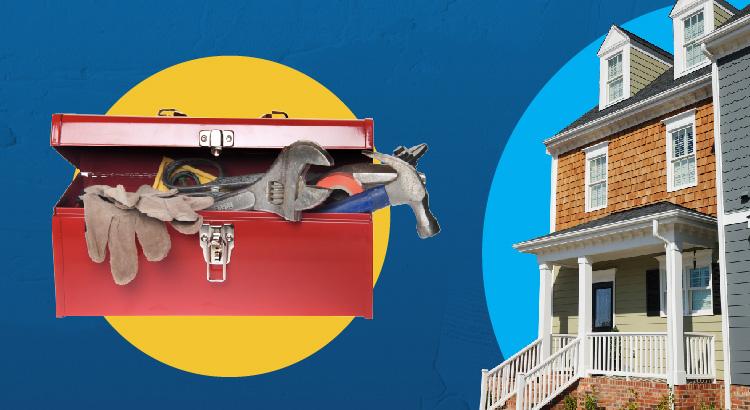Minneapolis, MN, is grappling with a pressing issue: Is There a housing shortage in Minneapolis? The demand for housing far surpasses the available supply, leaving many residents struggling to find affordable and suitable homes. As the population continues to grow and attract newcomers, the strain on housing development has become increasingly evident.The need for more housing developers and initiatives aimed at increasing affordable housing options has never been more critical. Join TheMLSOnline as we examine how this scarcity impacts individuals and families in their quest for stable and affordable housing options.
Reasons Behind the Housing Shortage
Rapid Population Growth
One of the primary reasons for the shortage in Minneapolis, MN, is the rapid population growth. As more people move to the city, there is an increased demand for homes, which outpaces the rate at which new units are being built. This surge in people can be attributed to various factors such as job opportunities, educational institutions, and a vibrant cultural scene.
Limited Land Availability
Another factor contributing to the housing shortage is limited land availability. The Twin Cities, also known as Minneapolis and St. Paul, like many other cities, has a finite amount of land that can be developed for residential purposes. With an increase of people and limited space for construction projects, it becomes challenging to meet the growing demand for homes, which greatly impacts the housing shortages.
The scarcity of available land also leads to higher competition among developers and potential homeowners or renters. As a result, prices tend to rise due to supply and demand dynamics, making it difficult for individuals with lower incomes to afford suitable housing options. Thus, eviction is on the rise, and tenants are being forced out of their homes.
Zoning Regulations and Restrictions
Zoning regulations and restrictions imposed by local authorities also play a significant role in exacerbating the housing shortage in Minneapolis. These regulations dictate how land can be used within specific zones or districts, determining factors such as building height limits, density requirements, and property use restrictions.
While zoning regulations serve important purposes, such as maintaining neighborhood character and preserving green spaces, they can hinder the development of affordable housing options. Some zoning restrictions may prevent developers from constructing multi-unit buildings or smaller-sized dwellings that cater to different income levels.
Certain neighborhoods may have stricter zoning regulations that limit affordable housing development compared to others. This concentration of restrictive zoning practices disproportionately affects communities with lower-income residents who struggle to find affordable homes within their desired areas.
To address these challenges and alleviate the housing shortage in Minneapolis, various strategies can be implemented:
- Encouraging mixed-use developments that combine residential units with commercial spaces.
- Relaxing zoning regulations in certain areas to allow for higher-density housing or the conversion of existing buildings into residential units.
- Streamlining the permitting and approval process for new construction projects to expedite housing production.
- Providing incentives and subsidies to developers who prioritize affordable housing options.
- Collaborating with community organizations and non-profit entities to develop affordable housing initiatives.
By adopting these measures, Minneapolis can work towards increasing its housing stock, improving affordability, and ensuring that residents have access to suitable housing options that meet their needs.
Impact of Declining Homeownership on Low-Income Families
The housing shortage in Minneapolis and St. Paul primarily affects low-income families, leading to a decline in their homeownership rates in the state.
- Financial constraints in the state often force low-income families to resort to renting due to unaffordable home prices, which can result in market instability.
- The decreasing rate of homeownership among low-income households in the state contributes to the widening wealth inequality, as they miss out on wealth accumulation opportunities.
- Beyond financial aspects, homeownership provides stability, community connections, and access to local resources in the state of MN, enhancing overall well-being.
- State Policymakers and stakeholders must plan for the shortage and homelessness from an equity perspective, focusing on increasing affordable housing options for low-income people.
- Potential plans and solutions to the housing shortages include subsidized programs and incentives for developers to allocate a portion of units for affordable homes.
- Improving access to affordable financing options, such as lower interest rates and down payment assistance, can make homeownership more achievable for low-income residents.
Rising Homelessness and the Housing Crisis
The housing crisis in Minneapolis, MN, has had a significant impact on homelessness rates, with the lack of affordable housing options being a major contributing factor. Homelessness has become a visible consequence of this ongoing crisis, highlighting the urgent need for solutions, such as rental assistance for people in the Twin Cities, to address both issues simultaneously.
Efforts to combat homelessness must go hand in hand with strategies to tackle the underlying issue. Here’s why:
Lack of Affordable Housing Options
The housing crisis in Minneapolis, MN, has created a situation where affordable homes are scarce. As rental prices continue to rise in the county due to inflation and limited supply, many individuals and families find themselves unable to afford suitable accommodation. This lack of availability and an assistance program leaves vulnerable people at risk of homelessness.
Increase in Homelessness Rates
With limited access, homelessness rates have seen a significant rise in Minneapolis, MN. Families and individuals who cannot secure stable housing often end up living in shelters or on the streets, facing immense hardships and the many challenges of homelessness. The increase in homelessness not only affects people directly experiencing it but also impacts the broader community. An assistance plan is needed.
Need for Comprehensive Solutions
Addressing homelessness requires more than just providing temporary shelters or emergency assistance; it necessitates tackling the root causes of the problem—the shortage of residences. By investing in a new housing development plan or a rental assistance plan that caters to different income levels, we can create opportunities for people and families struggling with high rents or unstable living situations.
Collaborative Efforts
To effectively address both homelessness and housing shortages, collaboration between various stakeholders is crucial. Advocates, nonprofits, government agencies, and community organizations need to work together to develop a comprehensive plan that provides long-term solutions.
Rental Assistance Programs
Implementing rental assistance programs can be an effective way to support people at risk of eviction due to financial difficulties. By providing emergency rental assistance or an eviction moratorium during times of crisis, we can help prevent further increases in homelessness rates.
Supporting Workforce Housing
Another important aspect of addressing the housing shortages is supporting workforce residents. This refers to providing an affordable option for people with moderate incomes who may not qualify for traditional low-income housing programs but still struggle to afford market-rate rentals in the county. By ensuring that essential workers can find suitable and affordable places to live, we strengthen our county as a whole.
Lack of Affordable Housing and Transportation Barriers
Limited access to affordable homes in Minneapolis, MN, exacerbates transportation challenges for its residents. The high costs of renting a home force many individuals to live far away from their workplaces, creating significant transportation barriers. Thus, housing shortages impact the financial well-being of residents and hinder their ability to commute efficiently.
Living in neighborhoods with housing shortages often means that people have to settle for residences in rural communities or a county far from the city center. This leads to longer commutes, increased travel expenses, and added stress on already congested roads and public transportation systems. The lack of proximity between homes and workplaces can result in reduced job opportunities for those without reliable transportation.
To address these challenges effectively, it is essential for initiatives to consider a plan regarding proximity to public transportation options. By strategically developing affordable options near existing transit routes, local governments can provide residents with more accessible and cost-effective commuting options. This approach not only reduces transportation barriers but also promotes economic development by connecting individuals with employment opportunities throughout the city.
Zoning Laws Play a Role in Housing Shortages
Zoning laws play a crucial role in determining where affordable housing can be built within cities like Minneapolis, MN. To combat the housing shortage effectively, local governments should consider revising zoning laws to allow for more diverse types of construction that cater specifically to low-income populations. By encouraging mixed-use developments that combine residential units with commercial spaces, cities can create vibrant communities where individuals can live closer to their workplaces while having easy access to amenities and services.
In addition to zoning reforms, providing financial assistance programs can help alleviate the burden of high rental costs on residents. Subsidies or rental assistance programs targeted towards low-income individuals and families enable them to secure affordable housing options closer to their places of work. These initiatives not only address the immediate needs of residents but also contribute towards long-term stability and upward mobility.
It is important for local governments and community organizations alike to recognize that the lack of affordable housing and transportation barriers are interconnected issues. By adopting a holistic approach that considers both aspects, Minneapolis can work towards creating inclusive communities where all residents have access to safe, affordable housing options within close proximity to their workplaces.
The Future of Affordable Housing: LIHTC and GMHF’s Efforts
The Low-Income Housing Tax Credit (LIHTC) program and the Greater Minnesota Housing Fund (GMHF) are two key players in addressing the affordable housing crisis, not just in Minneapolis but across Minnesota. These organizations are working tirelessly to support innovative approaches that can provide more affordable options for individuals and the family in need.
LIHTC: Funding Affordable Housing Projects for Renters
The Low-Income Housing Tax Credit (LIHTC) program is a crucial source of funding for affordable housing projects. It provides tax incentives to developers who build or rehabilitate rental properties for low-income families and potential renters. Through this program, developers can receive tax credits over a period of 10 years, which they can then sell to investors to generate funds for their projects.
The LIHTC program has been instrumental in creating thousands of affordable units across the country. In Minneapolis, MN, specifically, it has played a significant role in supporting the development of affordable rental properties for renters. By incentivizing private investment in these projects, LIHTC helps bridge the gap between the cost of construction and what low-income renters can afford.
GMHF: Addressing Affordable Housing Needs
The Greater Minnesota Housing Fund (GMHF) is an organization dedicated to providing resources and support for community development initiatives across Minnesota, including Minneapolis. They work with various partners to address the pressing need for affordable homes by investing in innovative solutions.
GMHF focuses on financing developments that cater to different income levels, ensuring that there are options available for individuals and the family at various economic stages. They also prioritize projects that incorporate sustainable building practices and promote energy efficiency, contributing to both environmental sustainability and long-term affordability.
Collaboration for Expanding Opportunities
The collaboration between LIHTC and GMHF offers hope for expanding affordable housing opportunities in Minneapolis. By combining their efforts, they can leverage their respective strengths and resources to create even more impactful outcomes.
One of the key benefits of this collaboration is the ability to pool funding from different sources. LIHTC provides tax credits, while GMHF offers additional financial resources and expertise in community development. Together, they can attract more investors and secure a larger budget for affordable housing projects.
Furthermore, the partnership between LIHTC and GMHF allows for a comprehensive approach to addressing the affordability of homes. By working together, they can identify gaps in the market and develop targeted strategies to fill those gaps effectively, in turn helping the family in need. This includes focusing on areas with high demand for affordable homes or exploring new models, such as mixed-income developments that promote inclusivity and integration within communities.
Is There a Housing Shortage in Minneapolis? Understanding the Shortage
Minneapolis grapples with a severe housing shortage, impacting its residents and homelessness rates profoundly.
This pressing issue necessitates a deep dive into the real estate market, trends, and potential solutions such as:
Innovative Programs: Officials can drive change by incentivizing developers to build affordable housing. Initiatives like incentives for developers, public-private partnerships, and community land trusts can help bridge the gap.
While challenges exist, organizations like LIHTC and GMHF lead the way to more affordable housing. TheMLSOnline connects buyers with available properties, making it easier to address this shortage collectively.
It’s time for us to unite and act. By supporting organizations like GMHF and advocating for housing-friendly policies, we can make a substantial impact. Whether you’re a potential homebuyer or a social change advocate, you have a pivotal role in creating a community where safe and affordable housing is accessible to all.








